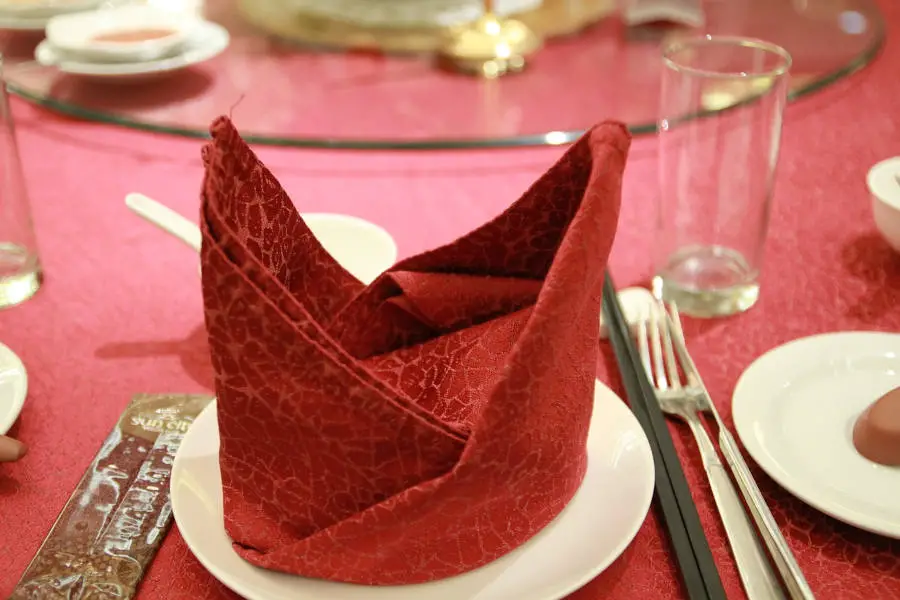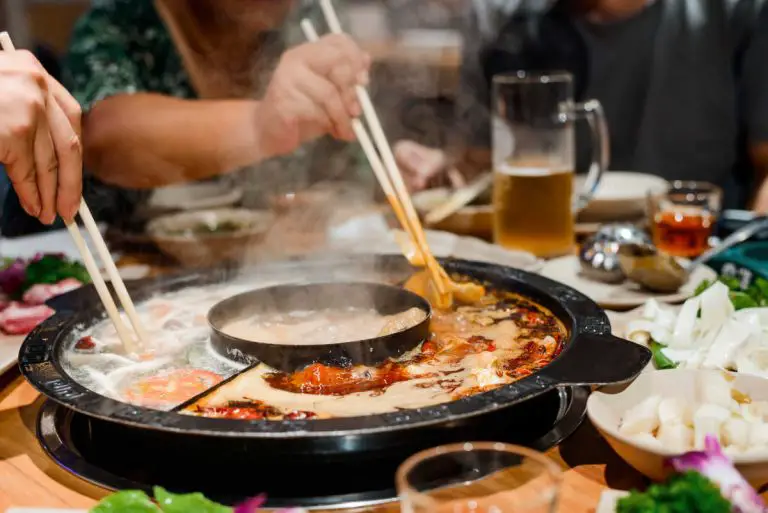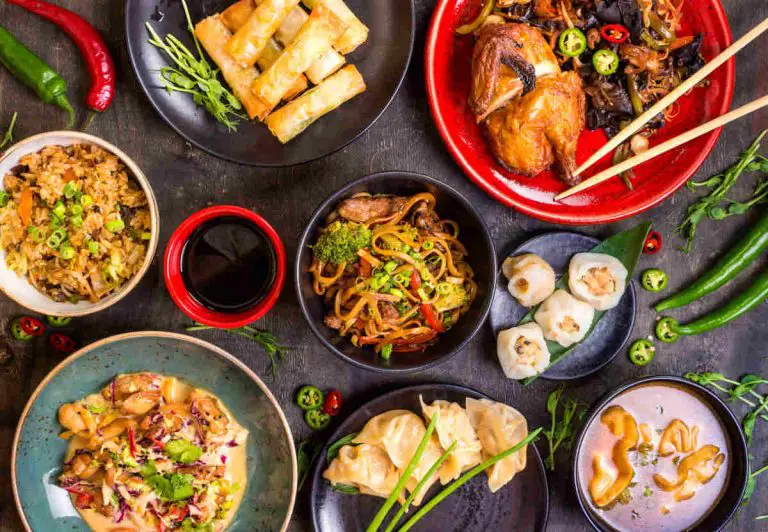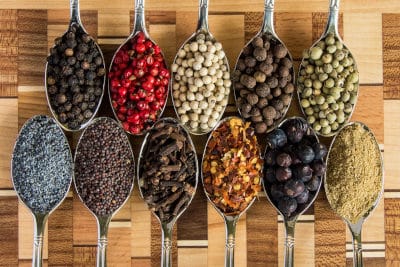Dining in China is more than just a meal; it’s a cultural experience steeped in tradition and symbolism. From the seating arrangements to the way you hold your chopsticks, every detail contributes to a harmonious and enjoyable gathering.
Whether you’re a seasoned traveler or a curious first-timer, understanding Chinese dining etiquette allows you to navigate the table with confidence, fostering deeper connections with your hosts and fellow diners.
So, join us as we explore the nuances of Chinese dining etiquette and table manners, uncovering the rituals and customs that shape this timeless tradition.
Seating Arrangements
In Chinese dining culture, seating arrangements are more than just finding a comfortable spot. They reflect respect for hierarchy, age, and tradition. The goal is to create a harmonious atmosphere where everyone feels valued.
Age and Status Matter: The guest of honor, usually the eldest person or someone of high standing, receives the most prominent seat. This is often the seat furthest from the entrance at a round table, symbolizing a position of respect. Those of higher status or age will be seated closer to the guest of honor, while others are seated further away.
Respect for Elders is Paramount: In Chinese culture, respect for elders is deeply ingrained. You’ll often see grandparents or older relatives seated in positions of honor, regardless of the occasion. It’s a beautiful way to acknowledge their wisdom and experience.
The Symbolism of the Round Table: Traditional Chinese meals are often served on lazy Susan-equipped round tables. The circular shape promotes equality and togetherness, as everyone has easy access to the dishes in the center. It’s a subtle reminder that the meal is a shared experience, encouraging conversation and connection.
| Position | Guest Description | Reasoning |
|---|---|---|
| Furthest from Entrance (Seat of Honor) | Eldest person or Guest of High Status | Shows respect and deference. |
| Closer to Guest of Honor (Based on Age/Status) | Older relatives, Important Guests | Reflects hierarchy within the dining group. |
| Further Away from Guest of Honor | Younger guests, Children | Maintains a respectful yet inclusive atmosphere. |
Related reading: “Hot Pot: Unveiling the Interactive Charm of Chinese Fire Pot” – Opens in new tab
Use of Chopsticks (筷子; kuàizi)
Chopsticks (筷子; kuàizi) are an essential tool in Chinese dining, and using them properly demonstrates respect for your hosts and the culture. Here’s a quick guide to elevate your chopstick skills:
Holding with Finesse: Imagine holding a pencil – that’s the basic grip for chopsticks. Rest one chopstick between the base of your thumb and the pad of your index finger. The other chopstick moves between your thumb and fingertips. Practice opening and closing them like tweezers. For better understanding watch the video below.
Etiquette in Action: Once you’ve grasped the hold, remember a few key points:
- Don’t stab or spear your food. Chopsticks are for picking up, not piercing.
- Never knock any dishes, such as plates and bowls, with your chopsticks, as this is associated with beggars and homeless people
- Don’t chase runaway food: Spilled a morsel? It’s okay to politely ask your host for help.
- When taking a rest, neatly leave your chopsticks by the side of your plate or place them horizontally on your plate.
- Avoid sticking your chopsticks into your food or rice, as this is considered a curse and reminiscent of incense used at funerals.
- If you are unsure about any aspect of the eating etiquette, simply wait and see how others do it, or ask politely.
Communal Dish: When sharing dishes, avoid hovering or rummaging with your chopsticks. Instead, select a piece from the top layer and be mindful of others.
Chopstick Taboos to Avoid: There are a few cultural faux pas to keep in mind:
- No pointing: Using chopsticks to point is considered rude.
- Don’t wave them around: Gesturing with chopsticks is seen as impolite.
- Chopsticks aren’t drumsticks: Tapping them on the table or plate is disruptive.
With a little practice, you’ll be using chopsticks like a pro, adding another layer of cultural appreciation to your dining experience.
Chopsticks: Do’s and Don’ts
| Chopstick Faux Pas | Proper Chopstick Etiquette |
|---|---|
| Pointing with chopsticks | Chopsticks are for picking up food, not gesturing. |
| Waving chopsticks around | Avoid excessive movement or using them to conduct. |
| Tapping chopsticks on the table or plate | This can be seen as rude or impatient. |
| Spearing food | Chopsticks are for picking up, not piercing your food. |
| Resting chopsticks upright in your rice | Place them horizontally on a chopstick rest or the edge of your plate. |
| Hovering or rummaging with chopsticks in communal dishes | Select a piece from the top layer and be mindful of others. |
| Chasing runaway food | Spilled a morsel? It’s okay to politely ask your host for help. |
Related reading: Exploring China’s Culinary Diversity: China’s Regional Delicacies – Opens in new tab
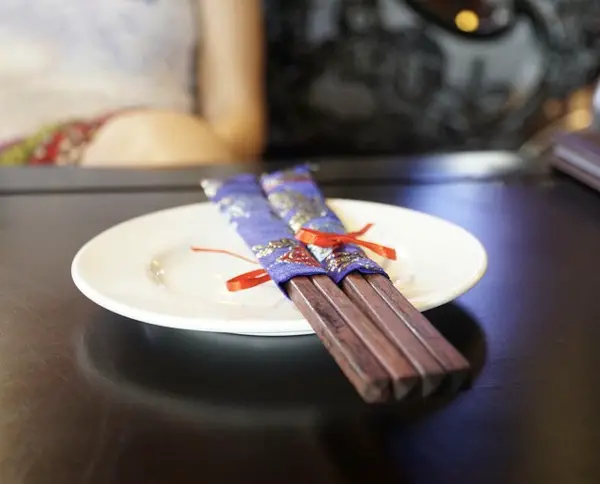
Order of Service and Pacing
The sequence of dishes served in a traditional Chinese meal follows a specific order to ensure a balanced and harmonious dining experience. Typically, the meal starts with cold dishes, which are often appetizers like salads or marinated vegetables, setting the stage for the main courses to come.
Following the cold dishes, soup is served, providing a warm and comforting interlude before the main courses. Chinese soups are often clear broths with ingredients like vegetables, meats, or seafood, enhancing the overall flavor profile of the meal.
Main courses are the heart of the meal, featuring a variety of dishes such as stir-fries, braised meats, and vegetable dishes. These dishes are usually shared among diners, promoting a sense of community and togetherness at the table.
Rice, a staple in Chinese cuisine, is typically served towards the end of the meal, accompanying the main dishes. It serves as a filler and helps to balance the flavors of the meal, providing a satisfying conclusion to the dining experience.
To avoid overeating and pace oneself throughout the meal, it is advisable to take small portions of each dish and savor the flavors slowly. Chinese dining emphasizes enjoying the meal leisurely and appreciating each dish’s taste and texture.
Leaving a small amount of food on your plate is a common custom in Chinese dining, symbolizing satisfaction and appreciation for the meal. This gesture signifies that the host has provided an ample and satisfying feast. However, ensure that the amount left is minimal, as leaving too much food may convey disrespect or ingratitude.
Order of Service: A Culinary Journey
| Course | Description | Notes |
|---|---|---|
| Cold Dishes ( 凉菜 liáng cài ) | Appetizers featuring marinated vegetables, cured meats, and pickled dishes. | Light and flavorful, these awaken the palate. |
| Soup ( 汤 tāng ) | Often served after cold dishes, it can be clear and brothy or thicker and more substantial. | Provides a comforting and warming interlude. |
| Main Courses ( 主菜 zhǔ cài ) | The star of the show! Featuring a variety of meat, seafood, and vegetable dishes. | Savory sensations presented in a harmonious balance. |
| Rice ( 米饭 mǐfàn ) | The staple starch, often served throughout the meal. | Acts as a delicious counterpoint and a sign of abundance. |
Do you want to learn more about Chinese cuisine? Check out these cooking books – Aff.link
Toasting and Drinking Etiquette
In Chinese dining culture, toasts and drinks play an essential role in social interaction and building relationships. Here’s a guide to navigate this aspect of the meal with confidence:
Toasts are often made throughout the meal, using either Chinese Baijiu (白酒) or tea. The host usually initiates the first toast, offering well wishes to everyone.
When proposing a toast, hold your glass slightly lower than those of higher-ranking individuals as a sign of respect. Make eye contact with the person you are toasting to convey sincerity and warmth. Next, have a single sip of wine or beer. However, a Baijiu toast is often ended with Ganbei (干杯, gānbēi – literally means “dry cup”), an exhortation to drain the glass.
Respecting Seniority: When proposing a toast, prioritize toasting senior members or esteemed guests before others. Address them with appropriate titles and gestures of deference, acknowledging their status within the group. This demonstrates reverence and honors their role within the social hierarchy. A simple phrase like “Xian qin wei jing” (先干为敬; xiān gān wéi jìng), meaning “I’ll finish my drink first as a sign of respect,” showcases your courtesy.
Moderation is Key: While alcohol is often enjoyed during celebratory occasions, moderation is key in Chinese dining etiquette. Refrain from excessive drinking, especially if it may compromise your behavior or etiquette. If offered baijiu, known for its high alcohol content, a small sip or a symbolic clinking of glasses is perfectly acceptable. A polite “duì bù qì” (对不起; duì bù qì) meaning “I’m sorry” or “wo bù hé jiǔ” (我不喝酒; wǒ bù hē jiǔ) translating to “I don’t drink” is a graceful way to decline.
Related reading: Chinese Street Food Adventures: Unveiling the Flavors of Chinese Night Markets – Opens in new tab
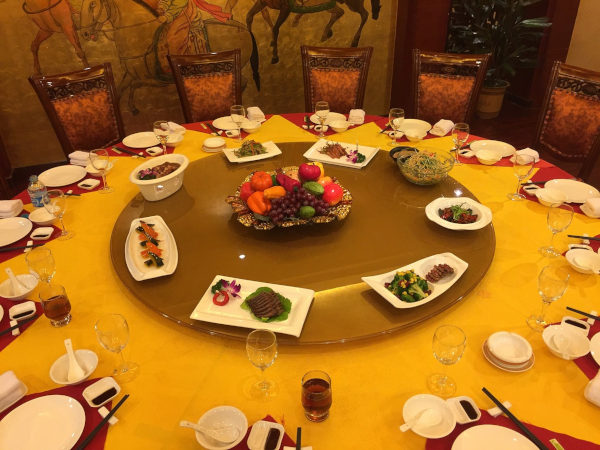
Interaction and Communication
During Chinese dining occasions, it’s wise to steer clear of certain topics that may disrupt the harmony of the gathering. Avoid discussing sensitive or controversial subjects such as politics, religion, or personal matters. Instead, focus on light and positive topics that promote conviviality and enjoyment.
Engage in discussions about food, culture, shared experiences, or lighthearted anecdotes to foster a pleasant atmosphere. Additionally, it’s essential to let your hosts guide the conversation, especially during formal occasions where you’re eating with elders or people you need to show respect to.
Politeness in Accepting and Declining Dishes
When offered a dish, it’s polite to say “xie xie” (谢谢; xiè xie) meaning “thank you” first. If you’d like some, a simple “hao” (好; hǎo) meaning “good” or “wo qīng chuí yī diǎn” (我请吃一点; wǒ qǐng chī yī diǎn) translating to “I’ll try a bit” demonstrates courtesy. To politely decline, “wǒ bù kěqi” (我客气; wǒ bù kèqi) meaning “you’re welcome” (used to decline) or “wǒ shì zhēng de chī bù xiàle” (我真的吃不下了; wǒ zhēn de chī bù xiàle) meaning “I’m truly full” allows you to gracefully refuse.
Expressing Gratitude to the Host and Compliments to the Chef
At the conclusion of the meal, express heartfelt gratitude to the host for their hospitality and generosity. A simple “xǐhuan nín de kāi chài” (喜欢你的款待; xǐhuan nín de kǔndài) meaning “I liked your hospitality” or “cànfān hěn kāixīn” (餐饭很开心; cānfàn hěn kāixīn) translating to “I had a very enjoyable meal” shows your gratitude for their generosity.
Additionally, offer sincere compliments to the chef for their culinary skills and the delicious meal they have prepared. “Cài de wèidao hěn hǎo” (菜的味道很好; cài de wèi dào hěn hǎo) meaning “The food tastes very good” or “shífu de kāiyuè hěn jiāo zuò” (师傅的手艺很棒; shīfu de shǒuyì hěn bàng) translating to “The chef’s skills are amazing” are sure to be appreciated.
Acknowledge the effort and thoughtfulness that went into creating the dining experience, conveying appreciation for the host’s efforts in ensuring an enjoyable gathering. Such gestures of gratitude strengthen social bonds and leave a positive impression on your hosts and fellow diners.
End Words
By incorporating these tips into your next Chinese dining experience, you’ll not only show respect for your hosts and their culture, but you’ll also unlock a deeper appreciation for the art of Chinese cuisine.
Remember, the focus is on savoring the food, enjoying the company, and participating in this beautiful cultural tradition. So relax, embrace the experience, and don’t be afraid to ask questions – after all, the most important ingredient is a sense of adventure and a willingness to learn!
Do you want to learn more about Chinese cuisine? Check out these cooking books – Aff.link
Stay in Touch
 Join our newsletter by using the forms on this website or click here!
Join our newsletter by using the forms on this website or click here! Follow us on Google News
Follow us on Google News Follow us on Facebook
Follow us on Facebook
Featured image by Karina Setiawan from Pixabay

